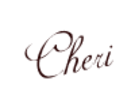Reviewing Social Media Options
In the last couple of years, I have begun using social media more for genealogy. Facebook groups for states, counties, ethnic groups and research topics of interest have provided a wealth of information. Google+ communities have helped with developing skills. Twitter has helped to get answers to questions in minutes as well as given an opportunity to talk with and learn from other genealogists in real time. My blog has helped me to reach out to family members and others interested in the genealogy process. Pinterest has helped me to see what others are doing and get great ideas for research, displaying heirlooms and much more.
It can be so easy to get so involved with social media that no actual research is getting done and hours are spent reading and commenting. It's the classic BSO. One way I have tried to overcome the temptation to spend my day consumed with all that is happening on the various platforms is to schedule social media time into my day. Having it run in the background as suggested by Thomas MacEntee, helps to make sure an important message doesn't get missed and keeps my day from being taken over.
Getting more involved with Linkedin will be my next step. I have a profile but haven't done much with it.
Building a Research Network
Social Media is one of the best places to build a research network, so it always surprises me when genealogists tell me that they don't use any of the platforms. From Facebook, I have had pictures identified, from twitter questions on a difficult research problem answered and cousins found through my blog. There are people I can turn to for help with anything from DNA to research strategies.
Not all of my network of friends come from social media. Meeting fellow genealogists at Conferences, Society and Club meetings is important too. Taking the time to share what we are working on and how we can help and support each other is a bonus of attending meetings. You never know when a "cousin" may be sitting right next to you.
Also important are the fellow researchers who are visiting the repositories the same day you are. Meeting people who are researching the same areas and records can give you ideas on new ways to approach your research. They can be an invaluable part of your network as can the staff of your local archives, historical societies and courthouses.
So many of those that I have met have become go-to friends for a variety of needs. We have been able to stay in touch via social media in between those face to face meetings.
Continuing to attend as many local and regional conferences and meetings as time and finances will allow and making sure I go out of my comfort zone to speak to fellow attendees will help to build my genealogy network.Taking the time to get acquainted with staff and other researchers at local repositories will be just as important as looking at the records contained there.
How do you network? Do you use Social Media? If you do, I hope we have connected and are part of each other's network. If you see me at a conference or other meeting, or at a repository somewhere, please come introduce yourself.
You've got a friend in me!
Are we kin? Please contact me. Together we can find our people.
Thanks so much for stopping by!





_Obit.png)




.jpg)








Camden1960s.jpg)












